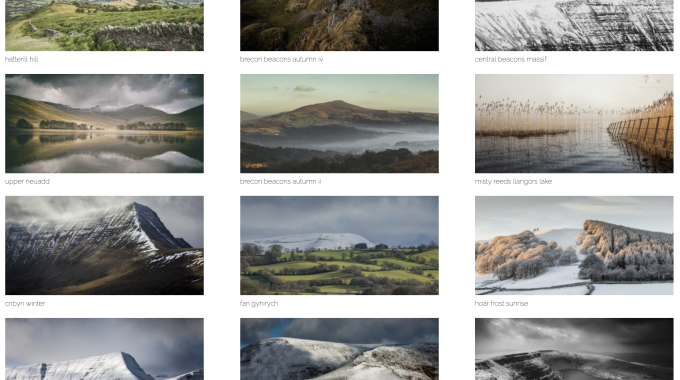Well another truly busy year, the commercial arm of my photography business has been very…
Brecon Beacons Aurora Borealis
Brecon Beacons Aurora Borealis I hear you ask?!
Well here’s the story of St.Patricks day 2015 and the Aurora display in the dark skies of the Brecon Beacons National Park.
The Brecon Beacons are known for their dark skies! What they are not known for is the Aurora Borealis. The Northern Lights are a phenomenon normally reserved for the arctic circle. I’ve been lucky enough to visit Tromso in Norway and see the Northern Lights in their finest greeny glow, but I must confess I never really expected to see them in the Brecon Beacons. Actually, let me clarify that a little, they have been seen in the Beacons before, but the extent of which they were seen last night was a surprise.
The KP levels were going through the roof from early afternoon. So what exactly is a KP level I hear you ask?
Well it’s a global chart which categories geomagnetic activity; 0 being low and 9 being a massive solar storm. The chart gives a good indicator for any visible aurora activity. There is no set level, the indicator values vary dependant on the solar activity. If you’d like a more detailed breakdown of solar activity and how CME (coronal mass ejections) impact us, this article is worth a read.
Aurora Borealis, Tromso, Norway
 Aurora Borealis, Tromso, Norway
Aurora Borealis, Tromso, NorwayWhat happened in the Brecon Beacons last night was actually quite rare, well very rare. The KP levels at around 11.30PM pretty much went off the scale. In excess of 8KP, which in simple terms meant the Aurora Borealis would most likely be visible from Mid Wales and below.
To give myself the best chance of viewing, I needed to head away from light pollution. Thankfully on my doorstep is the Brecon Beacons National Park. It has recently acquired it’s world famous Dark Skies Reserve Status. A dark sky reserve is essentially an area of land (usually a national park) that is kept free of artificial light pollution. The Brecon beacons are only a 30-40 minute drive from Cardiff where we are based.
I jumped at around 9.30PM and headed straight up the A470, ideally I’d have climbed up to the summit of Pen Y Fan, but time was against me last night, so I made a simple and very easy decision to head towards the Brecon Beacons Visitor Centre. The visitor centre is one of the ten suggested locations based within the park that give the best dark skies. It has a limited magnitude of 6.37. This limited magnitude term refers to the number of faintest stars that can be seen with the naked eye near on clear moon free nights. Essentially, it’s one of the best locations in the park for observing the night sky.
Enough of “wookie waffle”…. this is the sight that I was presented with upon arrival
Yup, that’s pretty much what I thought too. Wow.
I was expecting and anticipating some colours, certainly a little green as a faint glow on the distant horizon. What I wasn’t expecting was the red colour. However,by far the biggest surprise and to me the most obvious and visible sign of the aurora in the Beacon Beacons were the light curtains. I expected the Aurora to appear as a distant glow. Certainly not these visible “curtains”, which consist of lots and lots of rays, which align themselves with the direction of the magnetic field. These most certainly weren’t hugely distinct curtains that I’ve seen in the arctic circle but were very visible to the naked eye.
What was rather lovely was that under the watchful eye of Martin Griffiths, who is one of the senior astronomy lecturers at South Wales University (and who also played a fundamental part in attaining the Dark Sky reserve status in the Brecon Beacons) was teaching a field exercise to students. It added a real human element to the evening. It was rather lovely listening to the students both photograph and observe through both the main Dark Skies telescope at the mountain centre or the vast array of scopes available out in the field for their use.
The last photograph shows a couple of the students observing whilst behind glows the red and green of the Northern Lights.
I’m always asked about settings and what “kit” did I use to make the images, I don’t think kit it hugely important in making successful photographs, but understanding the technical aspects of your camera helps when making images at night.
I used a tripod, a Canon 5D mark II, a 24-70 F2.8 lens and shot mostly at 3200 ISO, exposure length was between 8 and 13 seconds at F2.8. White balance settings were manually set at around 3800K. I hope that helps anybody who might be curious.
I am an ambassador for the Brecon Beacons National Park and also an ambassador specifically for the dark skies in the park. I’ve talked recently at a conference in Snowdonia National Park (who are undergoing an application for dark skies status) and will be running a number of dark skies workshops within the park in 2015 and 2016.
The next workshop is on the 19th September of this year and will cover Telescopes, what you can see in the night sky and astro photography. I am running this with Huw James an adventure astronomer. Details can be found here.
If you have any questions, or any media enquiries, please feel free to contact me here.





This Post Has 0 Comments